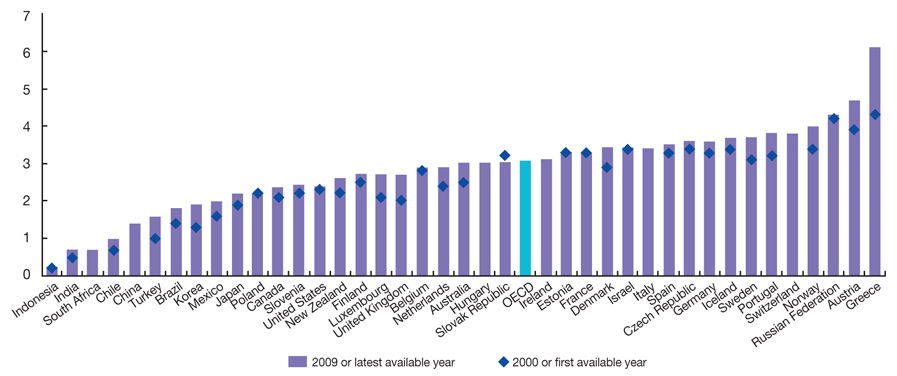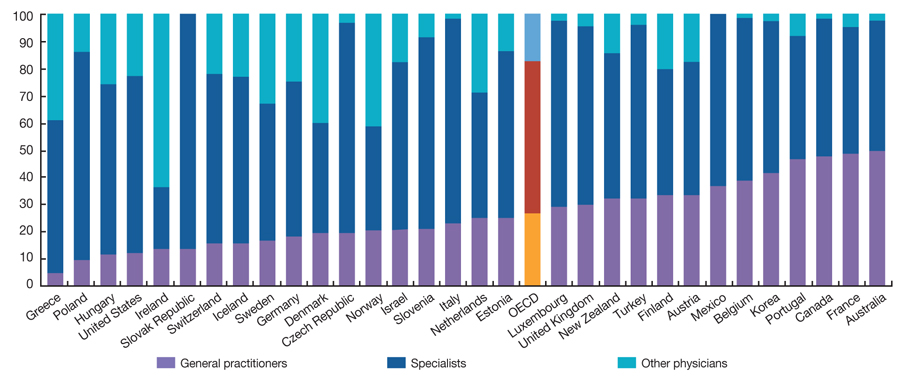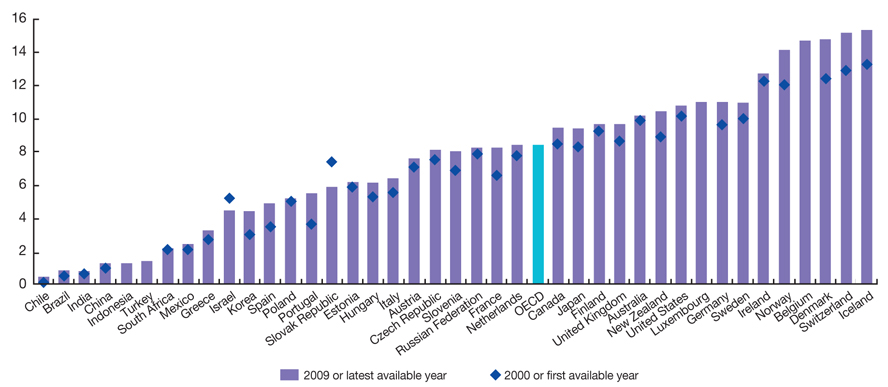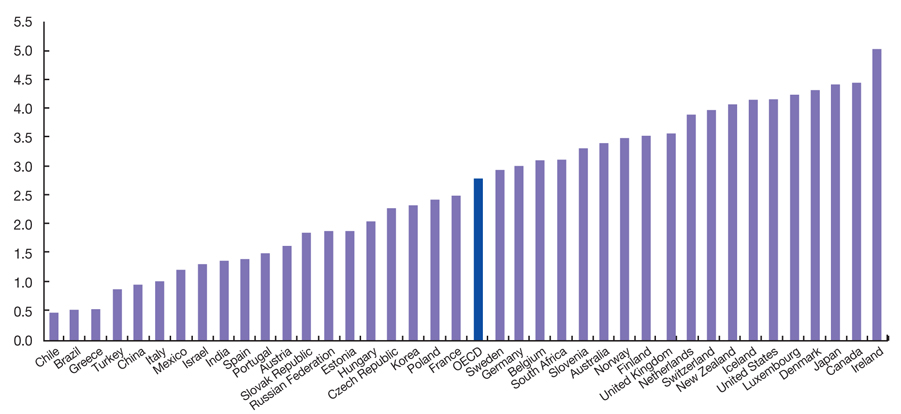J Korean Med Assoc.
2012 Oct;55(10):940-949. 10.5124/jkma.2012.55.10.940.
Current status and new policy direction of healthcare personnel in Korea
- Affiliations
-
- 1Department of Preventive Medicine, Wonju College of Medicine, Yonsei University, Wonju, Korea. kimcb@yonsei.ac.kr
- 2Institute for Poverty Alleviation and International Development, Yonsei University, Wonju, Korea.
- KMID: 2192814
- DOI: http://doi.org/10.5124/jkma.2012.55.10.940
Abstract
- The health insurance financial crisis and the aging population have overshadowed the South Korean healthcare market. Reforming healthcare has become a major policy issue in the upcoming presidential election on December 19, 2012. It is hard to imagine a time when expectations have been higher and the challenges have been greater for the next administration to create a sustainable healthcare system. Among healthcare policy problems, the new administration must keep in mind reforms for healthcare personnel. Accordingly, several intermediate and long-term actions and initiations for healthcare personnel can help lay the groundwork for sustainable development of Korea's healthcare system. Possible examples include balancing the supply plan of physicians and nurses according to the finances of the National Health Insurance, controlling the number of dentists, oriental medical doctors, and pharmacists, while enhancing health education specialists, and complementary and alternative medical therapists.
MeSH Terms
Figure
Cited by 1 articles
-
The current status and directions of healthcare policy in Korea
Eun-Cheol Park
J Korean Med Assoc. 2012;55(10):930-931. doi: 10.5124/jkma.2012.55.10.930.
Reference
-
1. United Nations. The future we want: outcome document adopted at Rio+20 [Internet]. 2012. cited 2012 Sep 27. New York: United Nations;Available from: http://www.un.org/en/sustainablefuture/.2. Organization for Economic Cooperation and Development. OECD factbook 2011-2012: economic, environmental and social statistics [Internet]. 2011. cited 2012 Sep 27. Paris: OECD Publishing;Available from: http://dx.doi.org/10.1787/factbook-2011-(110/111)-en.3. Ministry of Health and Welfare. Ministry of Health and Welfare year book 2011. 2012. Seoul: Ministry of Health and Welfare.4. Fuchs VR. Reforming US health care: key considerations for the new administration. JAMA. 2009. 301:963–964.5. Leavitt JK. The new administration and health care reform. Am J Nurs. 2009. 109:86–87.
Article6. Reiboldt M. Reforming healthcare becomes key focus of new administration. J Med Pract Manage. 2009. 24:267–269.7. Wilensky GR. A new year, a new administration, and old, familiar challenges for health care. Healthc Financ Manage. 2009. 63:26–27.8. Kim PC. A proposal for health insurance policy to the new administration. J Korean Med Assoc. 2003. 46:84–86.
Article9. Healthcare Future Commission, Ministry of Health and Welfare. Korea Institute for Health and Social Affairs. 2020 Vision and policy initiative of healthcare in Korea: Healthcare Future Commission action report. 2011. Seoul: Korea Institute for Health and Social Affairs.10. Jeong HS, Kim JH, Park HK, Lee WJ, Han DW. Future need and supply of practicing doctors in total and by specialty. 2011. Wonju: Yonsei Institute for Health and Welfare.11. Kim DH. Study on the supply and demand for the physician manpower in Korea. Health Soc Sci. 2000. 8:221–239.12. Lim SM, Seo KH, Kim HK, Park YH. A survey of physicians working in a community health center. J Korean Med Assoc. 2012. 55:174–186.
Article13. Yoon SJ. Future directions of chronic disease management in South Korea. J Korean Med Assoc. 2012. 55:414–416.
Article14. Park HA, Choi YH, Rhee SJ. The supply and demand projection of nurses in Korea. Korean J Health Policy Adm. 1993. 3:146–168.15. Kim JS, Choi E, Park HA, Lee W. The supply and demand projection of nurses in Korea. Korean J Health Policy Adm. 1999. 9:33–52.16. Kim AJ. The review of the laws relevant with imbalance of health care services (medical facilities and manpower). Bioeth Policy Stud. 2010. 4:139–151.17. Hussain A, Rivers PA, Glover SH, Fottler MD. Strategies for dealing with future shortages in the nursing workforce: a review. Health Serv Manage Res. 2012. 25:41–47.
Article18. Oh PJ, Lee KS, Hwang SH. A study on the projected manpower of psychiatric-mental health APN in Korea. J Korean Acad Psychiatr Ment Health Nurs. 2002. 11:560–571.19. Shin HS, Hong SY. The supply and demand for dentists in Korea. Health Soc Welf Rev. 2007. 27:81–102.20. Jung SH, Ma DS, Park DY. A survey on the imbalance of resident? Supply for dental specialists system. J Korean Dent Assoc. 2005. 43:728–736.21. Choi EY, Kim JS, Lee JS, Lee WB, Lee WT. The supply and demand analysis of the oriental medical doctor and its uses in assisting policy making. J Korean Orient Med. 1999. 20:27–36.22. Lee S, Byun J, Kim J. Demand and supply of physicians for oriental medicine: review and prospects. Korean J Orient Prev Med. 2004. 8:1–12.23. Choi EY, Kim JS. The study of pharmacist manpower planning for the 21st century in Korea. J Korean Public Health Assoc. 2000. 26:249–259.24. Yoon TH, Kim YS, Kim HR. Home-based physical therapy infrastructure and the direction of policy development for long term care insurance in community. J Korean Phys Ther Sci. 2008. 15:61–69.25. Jeong WM, Choi HS, Lee JY. Demand and supply for occupational therapist. J Korean Acad Occup Ther. 2000. 8:111–120.26. Kwon HS, Cho GS. A study on the role of dental hygienist for revitalization of dental health class in community health center. J Korean Soc Dent Hyg. 2006. 6:263–282.27. Kong IS. Future directions of emergency healthcare policy in Korea. J Korean Med Assoc. 2010. 53:838–840.
Article28. United Nations. Realizing the future we want for all: report to the secretary-general. 2012. cited 2012 Sep 27. New York: United Nations;Available from: http://www.un.org/en/development/desa/policy/untaskteam_undf/untt_report.pdf.29. Eaton DM, Redmond A, Bax N. Training healthcare professionals for the future: internationalism and effective inclusion of global health training. Med Teach. 2011. 33:562–569.
Article30. Anand S, Barnighausen T. Health workers at the core of the health system: framework and research issues. Health Policy. 2012. 105:185–191.
Article
- Full Text Links
- Actions
-
Cited
- CITED
-
- Close
- Share
- Similar articles
-
- Direction of Healthcare Expenditure on Research and Development
- Direction of Healthcare Reform for Sustainability
- Priority analysis of the healthcare policy using analytic hierarchy process
- Improvement of supportive systems for medically-underserved areas
- Reviews of Pay-for-Performance and Suggestion for Korean Value Incentive Program





